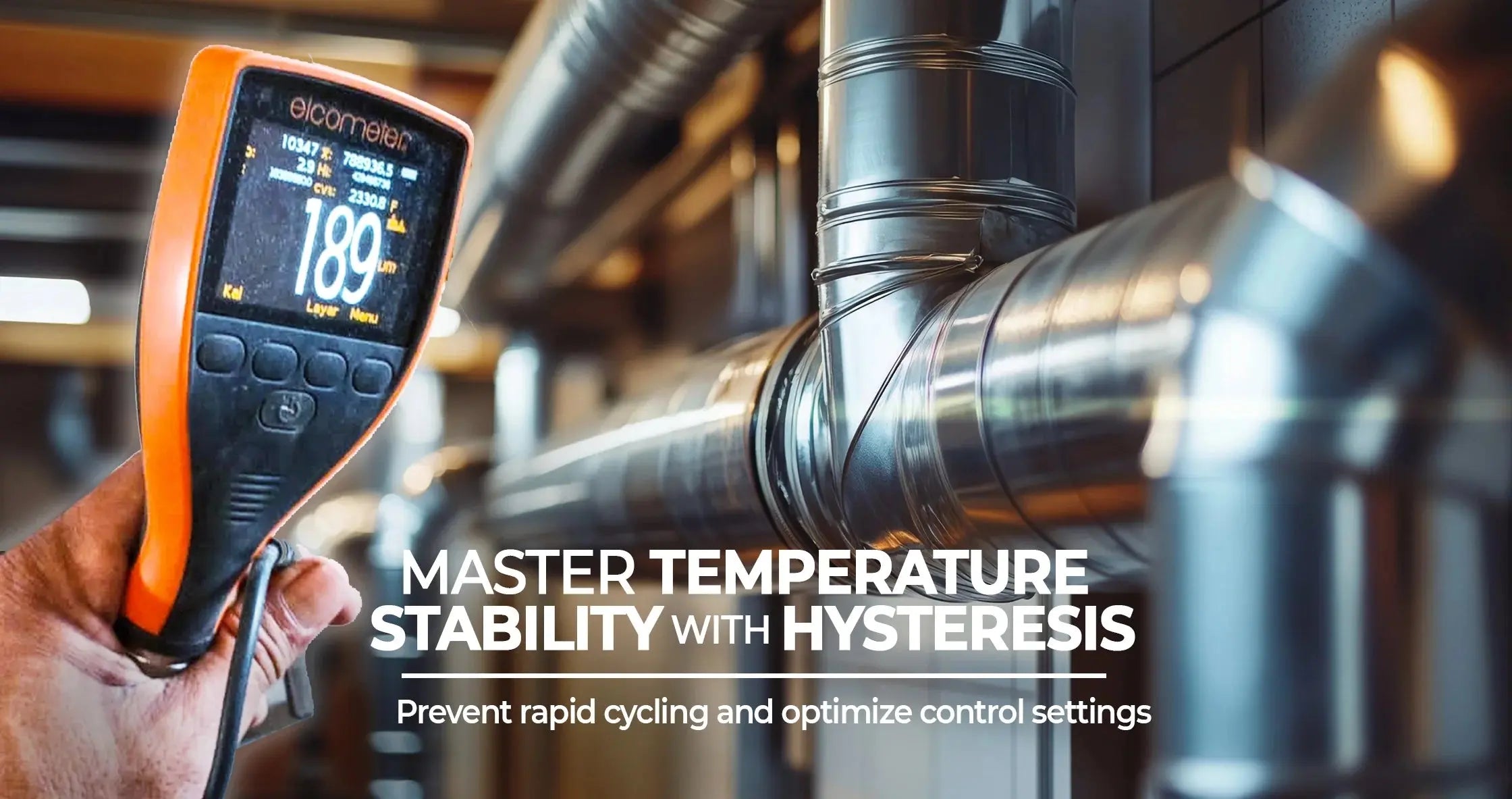Introduction: Why Temperature Controller Hysteresis Matters
In industrial process control, a temperature controller is an essential tool for maintaining specific temperature ranges in systems like HVAC, food processing, chemical manufacturing, plastic molding, and laboratory environments. One technical aspect that often gets overlooked is hysteresis—a small but critical component in achieving stable temperature control.
Without properly configured hysteresis in a temperature controller, systems are prone to rapid cycling, leading to wear on components, wasted energy, and inconsistent results. In this blog, we’ll explore the mechanics of hysteresis in temperature control, how it prevents undesirable cycling, and why it’s essential for smooth, efficient, and reliable operations.
What Is Hysteresis in Temperature Control?
At its core, hysteresis refers to the difference between the temperature at which the controller switches the output on and off. It introduces a deadband or tolerance band between these states, allowing the system to stabilize rather than react instantly to every minor fluctuation in temperature.
For example, consider a heating application with a temperature controller set to 100°C and a hysteresis of 2°C. The heater will turn off when the temperature reaches 100°C, but it won't turn back on until the temperature drops below 98°C. This 2°C deadband is hysteresis in action.
The Role of Hysteresis in a Temperature Controller
The role of hysteresis in a temperature controller is to prevent unnecessary output switching caused by small, rapid fluctuations. In tightly controlled environments, even a 0.1°C deviation can trigger the controller if hysteresis is not configured, resulting in rapid on/off cycling. This cycling leads to:
- Reduced lifespan of mechanical components (like relays or contactors)
- Increased energy consumption
- Thermal shock to sensitive systems
- Noisy operation
Hysteresis helps absorb these fluctuations, ensuring the temperature remains within an acceptable range without overreacting to every spike or dip.
Temperature Controller Hysteresis and Cycling
Cycling is a common problem in temperature-controlled systems, especially when the controller has a zero or minimal hysteresis setting. Without a deadband, the system toggles continuously between heating and cooling states, often several times per minute.
Hysteresis prevents this by creating a buffer zone. By only responding when the temperature crosses the hysteresis band, the controller maintains more consistent control, extends equipment life, and reduces operational noise. This is particularly vital in systems with mechanical relays or compressors, where frequent switching can cause premature failure.
In PID controllers, while proportional control attempts to smooth output behavior, adding hysteresis to the output stage is still necessary in ON/OFF modes or for final control elements like relays.
Key Benefits of Hysteresis in Temperature Controllers
- Reduced Equipment Wear: Mechanical switches and relays benefit greatly from hysteresis. By preventing constant toggling, their operational lifespan is extended.
- Energy Efficiency: Avoiding frequent heating or cooling cycles saves power.
- Improved Process Stability: Maintaining temperature within a defined range without rapid swings ensures better end-product quality.
- Noise Reduction: Systems with compressors, fans, or pumps operate more quietly.
- Lower Maintenance Costs: Fewer on/off events reduce wear-and-tear-related maintenance needs.
How to Set the Right Hysteresis Value
Setting hysteresis involves a balance. Too narrow a band causes cycling; too wide results in temperature drift. The ideal setting depends on:
- Thermal Inertia: How quickly or slowly the system responds to changes
- System Sensitivity: Are minor fluctuations acceptable?
- Output Type: Solid-state relays can handle more frequent switching; mechanical relays cannot
- Process Requirements: Is tight precision required, such as in laboratories, or is a general range acceptable, like in HVAC?
Always consult your controller’s manual and test configurations before committing to full-scale deployment.
Examples of Hysteresis in Real-World Applications
- Food Processing: Fryers and ovens use hysteresis to maintain oil or chamber temperature within safe and optimal ranges.
- HVAC Systems: Thermostats with hysteresis prevent compressors from cycling on/off excessively.
- Plastic Injection Molding: Maintaining mold temperature within a tight range reduces product defects.
- Greenhouses: Temperature controllers use hysteresis to toggle heating and ventilation systems efficiently.
- Scientific Labs: Precision heaters and chillers maintain sample integrity by avoiding rapid fluctuations.
Advanced Controllers and Hysteresis Customization
Modern temperature controllers allow detailed hysteresis configuration. Some even allow:
- Different hysteresis values for heating and cooling modes
- Time delays in conjunction with hysteresis for smoother transitions
- Integration with alarms or digital outputs when hysteresis thresholds are crossed
Choosing a controller that supports these features is essential for advanced applications requiring reliability and consistency.
Misconceptions About Hysteresis in Temperature Controllers
Many users assume a tighter hysteresis band always means better control. However, this is not true. Overly tight bands can cause excessive cycling, defeating the purpose. Others believe hysteresis is only useful in ON/OFF control, but it can be integrated into PID systems too, especially where ON/OFF devices are used for actuation.
Troubleshooting Issues with Hysteresis Settings
If your temperature controller still cycles too frequently:
- Verify the hysteresis value is properly configured
- Check sensor placement and response time
- Inspect for electrical noise affecting signal stability
- Consider thermal lag or overshoot in your process
Tuning hysteresis may require trial and error, but data logging and trend monitoring can help fine-tune the settings.
Conclusion: Reliable Control Starts with Smart Hysteresis Settings
Temperature controller hysteresis is not just a technicality—it's a crucial feature that protects your system, improves reliability, and boosts efficiency. Whether you're managing a laboratory setup or an industrial HVAC system, applying the right hysteresis prevents harmful cycling and ensures your temperature controller operates within optimal ranges.
Explore our collection of temperature controllers, panel meters, sensors, and process control accessories at Industrial Electrical Warehouse. Discover top-performing brands and smart solutions designed for reliability, flexibility, and ease of configuration.


